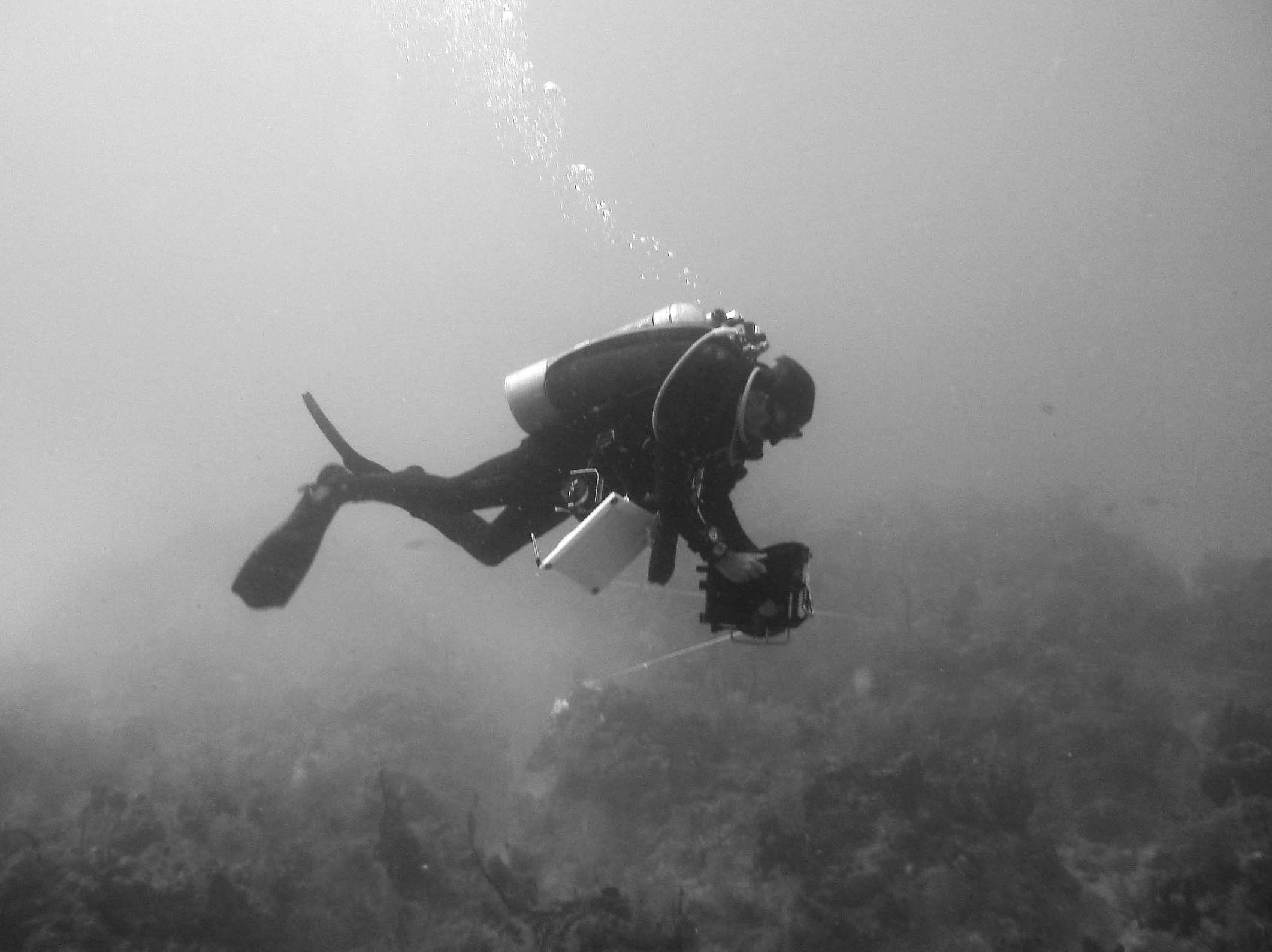
Research
Evaluation of acoustic Doppler diver navigation console
HENCH, J. L., and J. H. ROSMAN, 2010. Analysis of bottom-track and compass error in a self-contained acoustic Doppler diver navigation console. Journal of Atmospheric and Oceanic Technology, 27 (7): 1229-1238.
Abstract
The Cobra-Tac (Teledyne RD Instruments) is a self-contained diver navigation system based on acoustic Doppler velocity log (DVL) technology that uses dead reckoning to compute displacements from a known starting point. The navigational accuracy of the system was evaluated using a series of field tests with known solutions. Initial test data had an obvious directional bias in the navigation measurements, with positional errors as large as 5% of the track length. An analysis of this error showed that the DVL speed measurements were extremely accurate and that most of the position error could be explained by heading dependent compass error. Compass error versus heading curves were different depending on whether a given route was mapped in a clockwise or counter-clockwise direction and further testing indicated that this was due to a combination of local magnetic field anomalies at the test site and instrument tilt. A post-processing correction procedure, based on a one-cycle compass error model, was derived that significantly improves Cobra-Tac position estimates. After correction, position errors were well within manufacturer specifications. Further tests using new firmware that permitted in situ underwater compass calibration gave position errors less than 1% of the track length. This level of accuracy should be sufficient for a wide range of scientific applications. Collectively, the test results and analyses indicate that Cobra-Tac can give very accurate navigation results, but the accuracy depends strongly on compass calibration and diver skill with the system.

Photograph of scuba diver navigating with a Cobra-Tac over a coral patch reef.